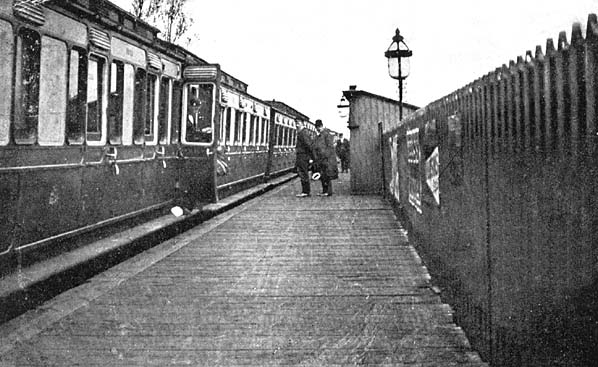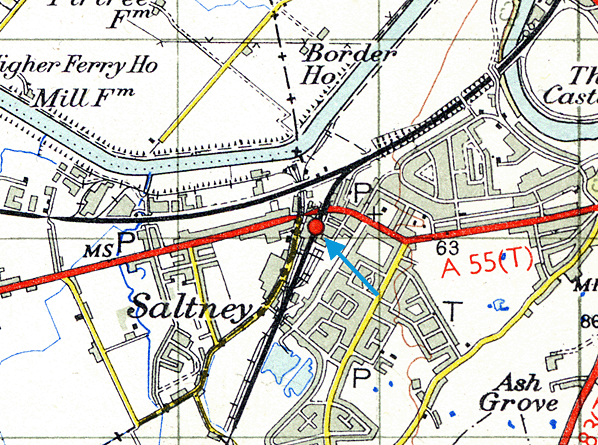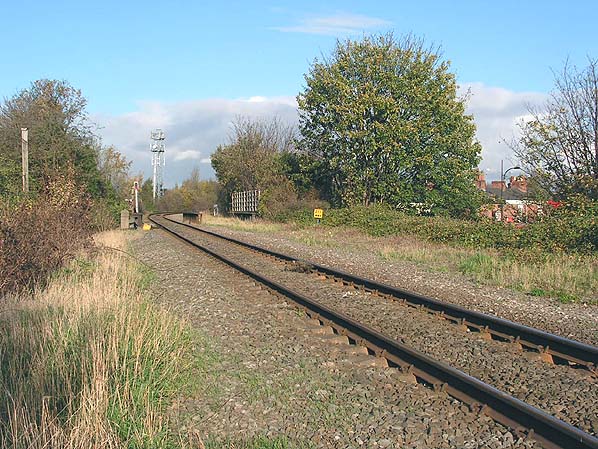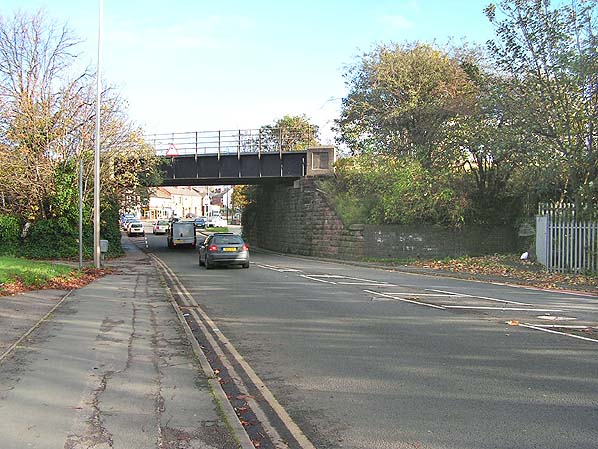Situated on the GWR main line that linked Chester
to Wrexham which opened in 1846 Saltney station was situated
only a few miles from Chester General Station and very close
to the GWR lines junction with the LNWR Holyhead to Chester
line.
Saltney station was situated on an embankment on the south side
of the bridge over the B5104. The station closed on 1.1.1917
as a war time economy measure but it did not reopen until 4.7.1932.
After nationalisation some British Railways tickets showed it
as a halt but it never appeared in timetables as a halt although
it was partially unstaffed from 28.5.1956.
Saltney Station closed to passengers on 12.9.1962 and there
is nothing left to show it ever existed. The line once the haunt
of Birkenhead to London Paddington expresses is still open as
a single track shadow of its former self.
To see the
other stations on the Chester General - Wrexham General line
click on the station name: Rhosrobin
Halt, Gresford,
Rossett, Pulford
& Balderton
|





 Home
Page
Home
Page
